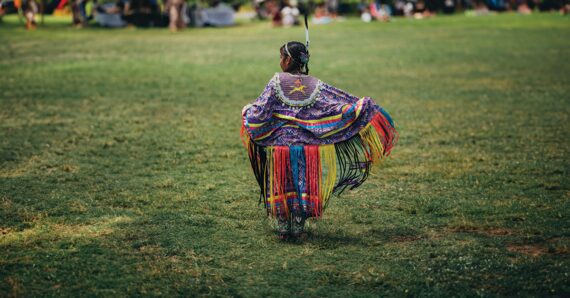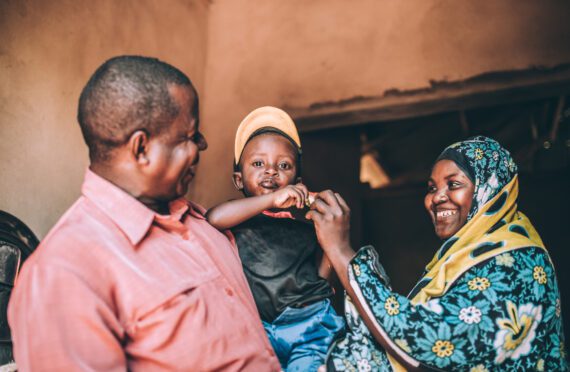By Isabel Vandermolen
A new USDA pilot program is helping to improve nutritious, sustainable, and culturally sensitive food options that support Indigenous communities.
A study of food insecurity among Native Americans, based on data for the decade 2000-2010, found that they are more likely to experience food insecurity than the U.S. population as a whole. One main cause of disproportionate poverty and food insecurity is historical inequities in federal policies and underinvestment in the well-being of Native Americans, including those who live on reservations.
Native Americans are eligible to participate in the Supplemental Nutrition Assistance Program (SNAP), but reservations are very often located in food deserts, far from the nearest grocery store. This makes it hard for residents to use these benefits. An alternative is the Food Distribution Program on Indian Reservations (FDPIR), which closes the distance gap by directly shipping food to local schools, food banks, and other community sites for distribution. An estimated 83,800 Native Americans benefited from the FDPIR program in 2019 (latest available statistics). Approximately 38 percent of participants reported that FDPIR was their only source of food.
Indigenous communities in the Northwest are expected to benefit from the new USDA pilot program. Using $5 million in funding from the Inflation Reduction Act and the Bipartisan Infrastructure law, the program will invest in local communities, provide culturally appropriate foods, and work to restore ecological balance in the region. For example, the program will purchase bison meat from small and mid-sized local and tribal bison producers in feasible quantities and make it available to FDPIR programs on reservations. The producers are located on several Sioux reservations, including the Lower Brule Sioux Tribe, Standing Rock Sioux Reservation, Cheyenne River Sioux Reservation, and Rosebud Sioux Reservation, thus contributing to local bison procurement.
Typically, USDA purchases foods for the FDPIR in bulk, but this makes it more difficult for Indigenous-owned or locally operated businesses to take part in food assistance partnerships in their own communities. Thus, it is important that the pilot program is catering to local bison ranches working in Indigenous communities.
The pilot will help advance food sovereignty among Native Americans. Food sovereignty is a concept that includes both the right to healthy and culturally appropriate food produced using ecologically sound and sustainable methods and one’s right to define one’s own food and agriculture systems.
In addition to investing in Indigenous communities, centering bison as the consumable for the FDPIR pilot program is important culturally and nutritionally. Access to bison as a source of meat, leather, and other resources has been an important part of many North American Native cultures. But this link was severed by the near-extinction of bison in the American West. U.S. policies that caused or enabled this drive toward extinction attacked the sovereignty of Native American tribes, reduced the size of reservations, and degraded grasslands.
Further, making bison meat more accessible is important in the context of past and present nutritional inequities. The original U.S. government food commodity programs often sent low-quality and culturally foreign foods to reservations. Not only were these meals no longer familiar or easily accessible to Indigenous families, but the U.S. commodities often lacked nutritional value. The pilot aims to make bison meat more readily available to FDPIR recipients.
In addition to delivering locally driven, culturally appropriate, and nutritious food, the program will contribute to the environmental stewardship goals of the U.S. Department of the Interior’s Grasslands Keystone Initiative.
Initiatives that seek to enable Native communities to exercise their food sovereignty have been growing. Public Law 93-638, the Indian Self-Determination and Education Assistance Act (commonly known as the 638 authority) supports these efforts since it does allow tribes to fully manage federal programs and services, including the FDPIR. It is thanks to the continued efforts of Tribal leaders through USDA consultations, reports, and monitoring of these programs, that these food sovereignty programs are being created to work to end hunger in Indian country.
Partnerships like this are an effective way to reinvest in Indigenous practices that solve food security issues, restore local ecologies, and support food sovereignty for Native communities. Two among many ways that these partnerships could potentially be scaled up to help meet the cultural and dietary needs of Native communities are to expand the program to include fresh produce grown by local Indigenous people, and/or to continue to identify and eliminate barriers for small and mid-sized Indigenous-led agriculture businesses to participate in federal Native nutrition programs.
Isabel Vandermolen is the climate-hunger fellow, Policy and Research Institute, with Bread for the World.



